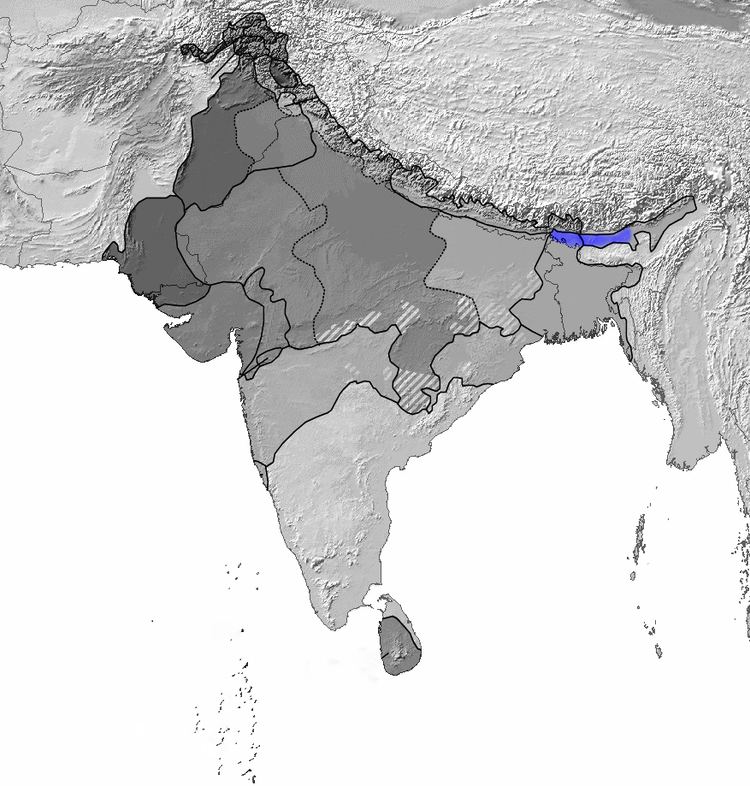India 60,00000 | ||
 | ||
The Kamrupi people are an ethno-linguistic group that speak the Kamrupi language and are found in the Kamrup region of India.
Contents
Culture
Villages still contained the traditional Vedic culture, while in case of towns and cities it relaxed a bit. Kamrupi culture largely flourished in the reign of Pushya Varman (350-374), the founder of great Varman dynasty of Kamrup Kingdom which reached its zenith in the reign of Bhaskar Varman (600-650). Scholars believes Kamrupi culture had a distinctive mark in every sphere, whether it be science or literature. Astronomy is a Kamrupi science. Daka, the great Kamrupi poet flourished undoubtedly during the ancient period.
Festivals
Durga Puja, Kali Puja and other Pujas; Diwali, Holi, Janmastami, Shivratri to name a few, are major festivals of the region. Muslims celebrate Eid. There is hardly any dance and music of the Bihu type so common in Eastern Assam, but a special spring time festival of this region is a fair usually held in the first week of Baihag or third week of April. It is known as "Bhatheli" in northern Kamrup, "Sori" or "Suanri" in southern Kamrup. In certain areas the breakers of the "bhatheli-ghar" come from another village, resulting in a sort of mock fight between them and the local youth. In the southern part of Kamrup, where the festival is known as Sori, planting of tall bamboos is not seen, but bamboo posts,with the tuft at the top. People bow before the bamboos in northern Kamrup and they also touch them with reverence, but it does not look like any sort of bamboo worship. The common popular term to designate the three festivals corresponding to Bihu of Eastern Assam, in Western Assam, except in West Goalpara, is "Domahi", e.g., "Baihagar Domahi", "Maghar Domahi" and "Katir Domahi".
Religion
Hinduism and Islam are major religions of the region. Hinduism is further divided into Vaishnavism and Shaktism. Hindu way of life can be observed in dressing, food and lifestyle, an important aspect of cultural identity for people of the region.
Hindu kingdoms as political identites made a long lasting impact on region defining the way of the life. In early part of second millennium, Islam arrived in region with Turkish and Afghan invaders.
Language
In first half of seventh century Chinese pilgrimage Yuan Chwang visited the region and wrote about language, which convinced Upendranath Goswami and others that "Assamese entered into Kamarupa or western Assam where this speech was first characterised as Assamese. This is evident from the remarks of Hiuen Tsang who visited the Kingdom of Kamarupa in the first half of the seventh century A.D., during the reign of Bhaskaravarman."
Kamrupi language is spoken in Kamrup region and also acts as lingua franca among various tribal groups like Bodo, Rabha and Koch.
Music
The folk songs of Kamrup region is known as Kamrupi Lokgeet. Kamrupi dance is a form of dance technique has been evolved from Bhaona which is a sophisticated type of dancing.
Cuisine
The Kamrupi food homogenous to certain extent with nearby eastern states of West Bengal and Bihar. Mustard seeds and coconut is generously used in cooking, while ginger, garlic, pepper and onions are extensively used. Traditional utensils are made of bell metal though stainless steel is quite common in modern times.
